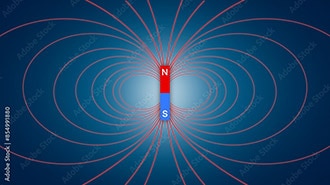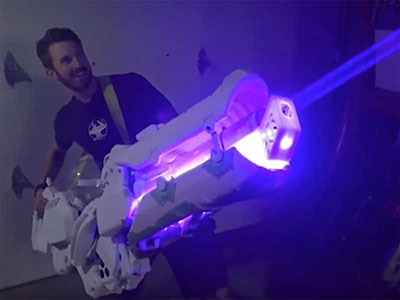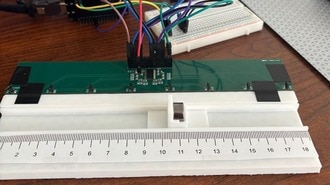The Hacksmith Making a Charging Circuit for a Railgun
2018-03-01 | By The Hacksmith
License: See Original Project Capacitors
This project was created by Engineering Superheroes of Hackmith Industries.
DO NOT ATTEMPT to Re-Create
The concept of a railgun is fairly simple, but making and powering one can be difficult. Check out how the Hacksmith team made theirs!
How Does a Railgun Work?
The basic principle behind a railgun is that it uses an electric current to create a magnetic field. This allows the railgun to shoot projectiles made from conductive materials. Electromagnetism is a well-known concept, but electromagnets can do a lot more than just stick to metallic objects. They can also shoot projectiles if a current is applied in a specific arrangement, in this case, two parallel “rails” are laid out, causing the electromagnetic force to act as a propellant when the rails are connected. Current travels from the power source up one rail, through the projectile which acts as a connecting wire, and back down the other parallel rail. The more current you can pump through the system, the more powerful the magnetic field and the faster the projectile will go.
Railguns are often confused with coilguns, which use electromagnetic coils to shoot projectiles, but a coilgun can only launch projectiles that are ferromagnetic. Here’s an easy way to remember the difference: a railgun uses parallel rails to shoot metal, and a coilgun uses coils to shoot magnets.
A diagram showing how electrical current affects magnetism in a railgun.
Design Choices
Although the final design is pretty cumbersome, it is still portable and is powered by a 24V LiPo battery. The battery can’t put out current fast enough to launch a projectile, so electricity is stored in capacitors, like in the Thor’s Hammer project, only instead of just one capacitor, this railgun uses 16 of them!
The capacitors are charged by a 400V DC step up converter powered by the battery. A voltmeter protected by a voltage divider monitors the charge of the capacitor bank. A 400V capacitor bank capable of discharging tens of thousands of amps is very dangerous, which is why the voltmeter is an important addition. It allows the user to know if the bank is safe to tough, ready to shoot, and limits the projectile’s velocity. Railguns can fire with a lot more velocity than was used in the video, but doing so would bring its classification up from an “air gun” to an illegal “firearm”, which will get you jail time in Canada.
Be sure to check out the Hacksmith Vlog channel for updates on projects.
More Fun with Electromagnets
















